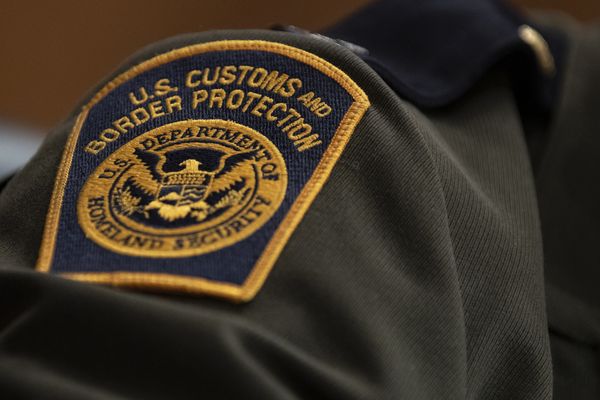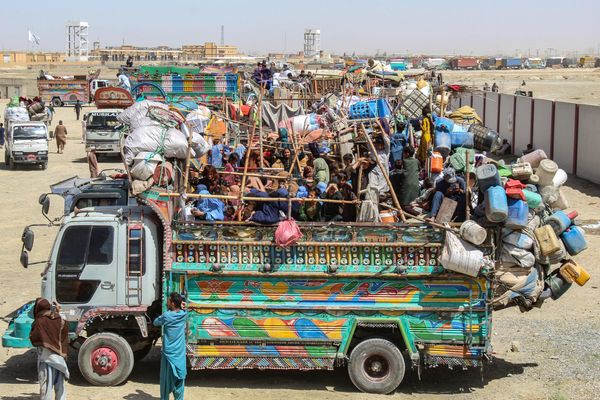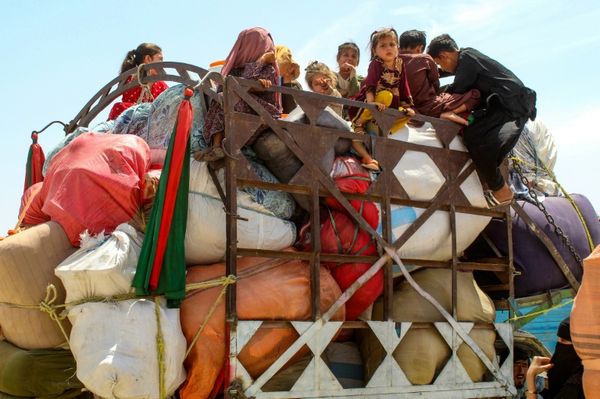
On a pre-dawn morning in January, state police and other agencies directed by the Louisiana governor, Jeff Landry, descended on homeless encampments throughout downtown New Orleans. More than 100 unhoused people were bused – under threat of arrest – to an industrial warehouse miles away, dubbed the “transitional center”.
The hastily assembled site had been arranged under a no-bid contract thanks to emergency powers invoked by Landry – who took office in early 2024 – and opened before an unprecedented winter storm that ultimately dumped about 10in of snow on some parts of the region.
The site did not have sufficient cots, adequate heating or even enough blankets when it first began taking in people on 15 January. Unhoused residents who didn’t want to go to the warehouse scattered, some forced to leave behind everything they owned just days before the dangerous blizzard hit on 21 January.
Mike Steele, the communications director with the governor’s office of homeland security and emergency preparedness, confirmed that the site had had insufficient heating at first. But, Steele said, the issue had been fixed, and staff had since ordered extra blankets.
Press, nonetheless, has not been permitted entry to the site. Concerns persist among unhoused people and their advocates about the warehouse arrangement – which is costing taxpayers more than $17m – as the eyes of the world turn to New Orleans, hosting the NFL’s Super Bowl on 9 February and Mardi Gras festivities culminating on 4 March.
Furthermore, the warehouse may be a harbinger of what’s to come nationally as the second Donald Trump presidency’s new housing secretary has refused to rule out government-run detention camps for unhoused people.
An affidavit from an ongoing lawsuit against Louisiana state police gives a glimpse into the way at least one person who is unhoused ended up at the warehouse.
In the affidavit, Christopher Aylwen, who had been unhoused for nine months, said he had been approached by law enforcement officers that morning and told that a bus was waiting to take him to a new facility. When he declined, officers told him: “It’s either that or jail.” He offered to move but was told: “No, you can come with us or we’ll cuff you and throw you in jail.”
Aylwen complied and was bused to the warehouse, where he was processed and given an identification bracelet. But when he saw “what appeared to be a bare warehouse”, he left, deciding to take his chances downtown, several miles away.
Other unhoused people, including one woman still wearing a hospital bracelet, had been forced to quickly abandon all their possessions as officers descended and began to rip apart their tents with knives and a Caterpillar front-end loader, according to witnesses.
Those who did go to the so-called transitional center found themselves in a 70,000 sq ft (6,503 sq meter) warehouse with no eye-level windows, established next to an industrial canal, and nearly a mile from the closest bus stop.
‘Not safe or healthy for human habitation’
Alison Poort, chief of staff for the New Orleans city council member Lesli Harris, visited the warehouse three days before state police began sending unhoused people there. She wrote in her affidavit that “the warehouse had no floor, and I was told by [on-site] staff that the walls had no insulation”. Rain leaked through holes in the roof, pooling on the ground near the sleeping area.
The day before residents arrived, the site still had no heating, and “staff said they were concerned about water entering through the walls when the wind blew”. Poort got the impression that “the site conditions were not safe or healthy for human habitation”. For the first couple days the shelter was open, the heat wasn’t working correctly, and indoor temperatures hovered in the mid-50s. One woman asked for a blanket because she was cold, but staff – themselves dressed in coats and scarves – told her no more were available.
A housing case worker who requested their identity be withheld because they weren’t authorized to speak on the subject said that multiple clients had missed medical appointments “because everyone’s either hiding or moving out of the area where they normally are”.
They also said conditions in the warehouse had improved since the initial “really rough days”, and most of their clients there were now satisfied with the services they were receiving. But the case worker was also surprised that transitional center staff had been pledging to house everyone, saying that if housing vouchers were suddenly more available, “I don’t know why these services [vouchers] couldn’t have been offered to us this whole year”.
Local news outlet the Louisiana Illuminator previously reported that Workforce Group, the company that received the operating contract and is politically connected to Landry, estimated it would cost $16m to run the warehouse for 90 days.
Emails obtained by the Guardian show that Workforce Group revised that figure upwards even further to “include the pass through costs”, making the total $17.5m for three months. That is about twice what Unity, the lead agency coordinating homelessness services, spends on program services over the same amount of time for all unhoused people in New Orleans.
The price tag is also equivalent to a year’s rent for a one-bedroom apartment for 1,177 people, which would constitute roughly 80% of New Orleans’ unhoused population.
Scattered in the freeze
As the historic snowfall began in New Orleans, housing service providers scrambled to bring people to warming centers. Incorrect information about available space, meanwhile, was circulated by the city’s 311 line and emergency preparedness office.
Perhaps complicating the city’s response: reports emerged on Monday that Nathaniel Fields, director of the municipal office of homeless services and strategies, was under investigation for sexually assaulting an employee the week before the sweeps began. The alleged victim said Fields’ behavior had interfered with her job, and that the city had been hostile towards her, telling her not to come in to work the week of the freeze.
As temperatures plunged, one warming center filled up, then another, until the city was forced to open a third. But the chaos of the sweeps made it hard for outreach workers to warn unhoused residents of the impending dangerous cold.
Standing outside New Orleans’ city hall just hours before the snow began, Brenna Byrne, a volunteer with the non-profit Southern Solidarity, distributed hats and coats to those who had remained outside. Some had not heard about the impending blizzard. Others were nervous.
Despite longstanding relationships with community members, Byrne “didn’t recognize anyone” out that night, she said worriedly. All the people she knew had been scattered, and she was concerned for their safety; several had outstanding requests for blankets, sleeping bags or medicine.
Since the sweeps, she couldn’t find them.
Meanwhile, conditions in the warehouse were so difficult and cold that several people left during the storm, said Angela Owczarek, a housing organizer.
Twelve days after being bused to the warehouse, residents there had still not gotten their belongings back. For some, that meant they had been unable to access medication, IDs or extra clothing.
Some of those who’d scattered found shelter elsewhere. Amid the blizzard, an unaffiliated volunteer who asked to be identified as Daniel dragged a tub of groceries and firewood along the snowy road as if it were a sled. He was bringing the supplies to unhoused people staying in an abandoned US naval base a few miles from downtown.
Inside the cavernous cement structure, Daniel built a fire. Elton, known as “Pops”, an elderly unhoused man who also declined to give his last name, warmed his hands. He said he had decided not to go to the warehouse even after being told he risked arrest.
The threat of arrest “sounds like profiling to me”, he said. Pops said the transitional center reminded him of time he had spent incarcerated. He planned to wait until friends had returned and gave their own assessment of the place.
As the snow fell, New Orleans’ emergency medical services saw a 41% uptick in call volume, taking more than 50 unhoused people to warming shelters over three days. That was “more than we anticipated”, said Alexis Paquette, the public information officer for the agency.
At least one person appears to have died from the cold. They were found in a car parked on the street, the New Orleans coroner’s office said.







